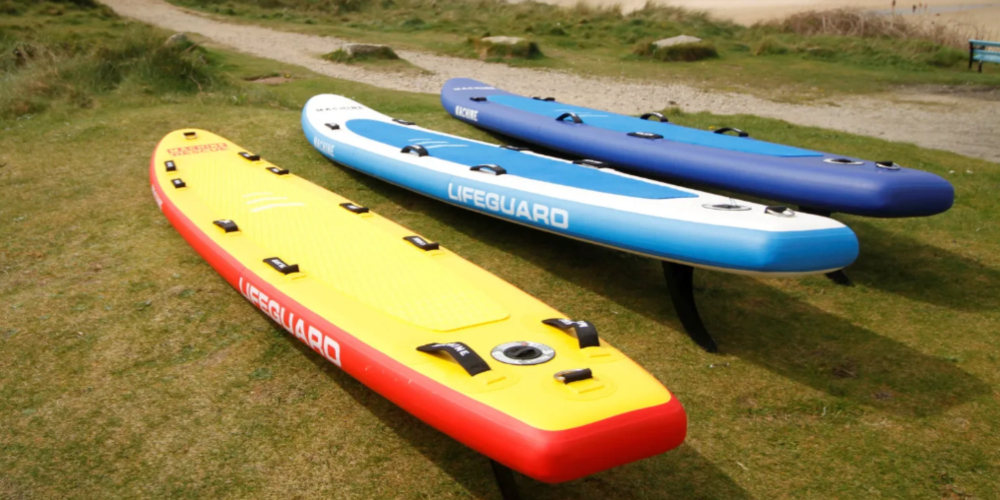The rescue board is an essential piece of equipment in the arsenal of surf lifesaving and surf rescue. They frequently appear in movies and television shows about surf rescue, such as Baywatch or Bondi Rescue.
The pieces of flexible plastic and epoxy resin that go into the construction of these massive boards, which are more often referred to as surfboards, make up the main components of this board. A rescue board’s massive fin is its defining characteristic, and it’s often much thicker than a regular surfboard. Because of these features, they also have greater buoyancy than traditional surfboards.
Dimensions of a rescue board
They designed rescue boards with the primary purpose of being able to carry more than one individual in surf conditions ranging from very small to medium. Due to the fact that the Surf Saving Lives regulating authority in each country establishes what constitutes acceptable dimensions and measurements, surf rescue boards typically have dimensions and specifications that are comparable to one another.
In surf competitions, however, where speed is prized more than saving a drowning individual, these ratios and quantities can be changed. The purpose of a surf competition is not to rescue a person who is in danger of drowning. Because of this, rescue boards used in competitions like the Nutrigrain Ironman are far faster than those used in real life, although being less acceptable and practical in saving a drowning patient.
Usability In Navigating
Since rescue boards are not attached to the user through leg rope, they can be swept away by flow or waves if the user lets go, posing a major hazard to swimmers or surfers if they strike. As a result, they are often only utilized when the victim is just beyond the yellow and red flags. It’s ideal for waves from one and six feet in height where it shines.
However, the proficiency of the surf lifesaver or council lifeguard is crucial for its deployment in higher surf conditions. A speed boat or IRB (air-filled rescue boat) typically goes to a patient more than 50 to 150 meters distant during a “board rescue,” ensuring a timely response. The rescue board can transport up to a five-person total (including the rider) in the surf, despite its intended for only two.
Events That Occur Concerning Board Rescuing
The starting line is on the sand in a board race, and riders line up with their board 1.5 meters apart. At the event’s start, participants will go into the ocean and pursue the course indicated by markers until they reach the finish line on the beach, where they will sprint across the sand.
When one team member finishes a round of the Board Relay, the next team member will take over, and so on, until all of the rounds have been completed. Each team may utilize its board or share a board with another. Three-person teams are the norm.
Teams of two compete in the “board rescue” event. A first-team member must swim 120 meters to a buoy in the water. At the end of the 120-meter swim, the participant will provide a sign to their colleague to come and get them. The two participants will be picked up, paddle back to shore, and then run with their boards to the finish. Each member can take turns carrying the board, but only one person needs to do it at a time.

